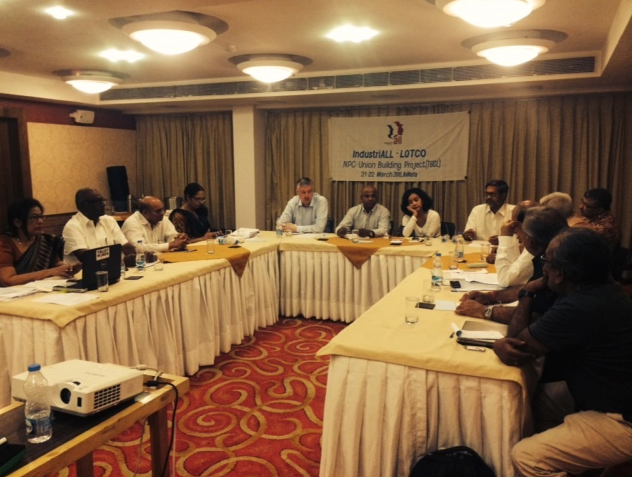23 April, 2015IndustriALL affiliates in the textile and garment sector in India have agreed to jointly organize workers. The agreement was made at the recently concluded Project Advisory Committee Meeting in Kolkata.
At a Project Advisory Committee Meeting held in Kolkata, on 21-22 March, IndustriALL Indian affiliates in the textile and garment industry for the first time agreed to jointly organize workers.
Participants at the meeting discussed the possibilities of collective organising, based on the strength of each affiliate. Structures were created to ensure the four rules are implemented at the enterprise and local level, by pooling the resources and strengths collectively through regular interaction and build solidarity. Affiliates agreed for numerical targets and results, which are achievable and measurable.
A national work plan was drawn up and affiliates agreed to work within the policy framework of four principles: unity and non-competition; cooperation and coordination; building structures for democratic functioning and union dues collection; sustainability.
The ready-made garment industry in India is spread across the country, concentrated in four geographical clusters; Chennai, Tirupur, Coimbatore and Bangalore in the South; Kolkata and Suburbs in the East; National Capital Region (NCR) and Ludhiana in the North; Mumbai and Ahmadabad in the West. Migrants make up the majority of the work force.
Each geographical cluster will have a steering committee with representatives from affiliates and the coordinator. Similar structures have been created in the Steel, energy and mining organizing project in India and Ready-made garment project in Bangladesh.
IndustriALL regional secretary Sudhershan Rao says:
This is the first step of a long journey to organize garment workers in India. The textile and garment sector unions need a push and motivation – the supply chain management by the brands and domestic producers is formidable, and we need collective organizing strategies for effective worker representation.



